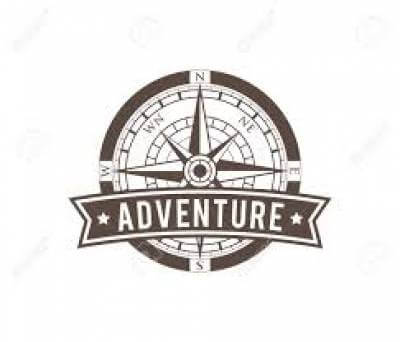EVEREST THREE HIGH PASS TREK 13 DAYS
The Everest Three High Pass Trek is a challenging and adrenaline-filled 13-day trek, specially designed for highly experienced trekkers looking for an impossible adventure. Due to its altitude, this trek is not for the faint of heart — or only high-altitude trekking beginners: It crosses steep, rugged terrain and three of the highest passes in the Everest region (Kongmala Pass, Cho La Pass, and Renjo La Pass). Yet the highest ascent of the day is a grueling climb of 1,000 meters (3,280 feet) of steep trail, and this is not for the faint-hearted, strength and skill to make such a trek are not achieved easily but rewards are unrivaled a breathtaking trek into the heart of the beautiful Khumbu region, with far-reaching views of Mount Everest and the other giant peaks.
Your journey starts with one of the world’s most spectacular flights, from Kathmandu to Lukla, famous for its dramatic approach through the Himalayas. After a few minutes of being airborne, you land in Lukla. Your trek starts by going down the steep jungle of Sagarmatha National Park towards Jorsalle. (Along the way, you’ll pass through varied landscapes, pristine rivers, and quaint Sherpa villages that give a hint of what’s to come.)
From Jorsalle, you’ll hike toward Namche Bazaar, a bustling Sherpa village and the gateway to Everest. Here is where you will acclimatize to the elevation and hike for a short duration to the Everest Viewpoint, where you will be breathless from the panoramic views of Everest, Ama Dablam, and neighboring peaks.
Prepare for one last trek to Kyanjoma, a small village perched with unbelievable views of the mountains around. A much-needed stop to refuel and refresh before heading higher. You then trek on to the Tengboche area, where you’ll visit the iconic Tengboche Monastery, and afterward continue on to Pangboche and the picturesque settlement of Dingboche, surrounded by alpine meadows and rugged topography.
After a day in Chhukung to rest and acclimatize, you will do the Chhukung Ri hike (5,550 meters) which provides amazing views of Makalu and Lhotse and the other surrounding peaks. This steep is very important for acclimatization to higher elevations.
After fully acclimatizing to the region, you will trek across the physically demanding Kongmala Pass (5,535 meters), gaining you panoramic views of Everest, Lhotse, Nuptse, and other Khumbu region mountains. From there, you’ll continue your trek to Everest Base Camp, at the foot of the looming Khumbu Icefall, one of the most iconic sights on this planet.
The next major attraction is the hike to the summit of Kala Patthar (5,550 meters), which is the highest point of the entire trek and will also offer one of the finest views of Mount Everest, Lhotse, and Nuptse. After this, you’ll make your way across Dzongla and face the difficult Renjo La Pass (5,360 meters), where you will be rewarded with yet other gorgeous panoramic views of the Everest massif and surrounding mountains.
You’ll hike onto the picturesque Gokyo Lakes and then climb on to Thame, a tranquil Sherpa hamlet, and Phakding. You'll head back to Lukla from Phakding and take your flight back to Kathmandu where your fantastic adventure ends.
The Everest Three High Pass Trek is not for the faint of heart. It takes detailed planning, physical readiness, and mental strength. But for the hardy adventurers looking to put themselves on the line, this is a once-in-a-lifetime experience: a chance to traverse some of the world’s most dramatic, high-altitude country in the heart of the Himalayas.
IMPORTANCE NOTICE: This trek is not for beginner trekkers. It is only suitable for very highly experienced trekkers who have completed several treks at altitudes above 5000 meters. Additionally, please note that from March to May and September to December, the Lukla flights will operate from Ramechhap. You will need to drive 5-6 hours from Kathmandu to Ramechhap to catch the flight.
ITINERARY
Day 1 : Fly from Kathmandu to Lukla & Trek to Jorsalle (2,740m) Duration: 7-8 hours.
Your adventure begins with a scenic flight from Kathmandu to Lukla, the gateway to Everest. Upon arrival in Lukla, the trek begins as you follow a winding trail towards the village of Jorsalle. As you ascend, you’ll cross numerous suspension bridges and trek through lush forests while soaking in the views of the surrounding peaks. Upon reaching Jorsalle, you’ll rest and prepare for the upcoming days.
Day 2 : Trek to Namche Bazaar & Hike to Everest View, Trek Down to Kyanjoma (3,600m) Duration: 7-9 hours.
On Day 2, the trek continues to Namche Bazaar, the bustling hub of the Khumbu region. The trail climbs steadily through pine forests and crosses several bridges. Once in Namche, you’ll have the option to hike to the Everest View Hotel for stunning panoramic views of Mount Everest, Ama Dablam, and other surrounding peaks. Afterward, you’ll trek down to Kyanjoma for the night, where you’ll rest and acclimatize.
Day 3 : Trek from Kyanjoma to Pangboche (3,885m) Duration: 7-8 hours.
Today’s journey takes you from Kyanjoma to Pangboche, passing through beautiful Sherpa villages and lush valleys. As you make your way to Pangboche, you'll experience breathtaking views of Everest, Lhotse, and Ama Dablam. The peaceful village of Pangboche is known for its ancient monastery, which you’ll visit before resting for the night.
Day 4 : Trek from Pangboche to Chhukung (4,730m) Duration: 7-8 hours.
On Day 4, the trail ascends steadily towards Chhukung, a small village that serves as a base for climbers attempting Island Peak. Along the way, you’ll pass by alpine meadows and cross bridges that offer stunning views of the surrounding peaks. Upon reaching Chhukung, you'll enjoy the serenity and prepare for the higher altitudes ahead.
Day 5 : Rest Day at Chhukung – Hike to Chhukung Ri (5,550m) Duration: 4-5 hours.
To acclimatize properly, you’ll spend the day hiking to Chhukung Ri, a peak at 5,550m that offers panoramic views of Makalu, Lhotse, and the surrounding Himalayan giants. This hike will help your body adjust to the altitude and prepare for the strenuous passes ahead. After the hike, you’ll return to Chhukung to rest.
Day 6 : Cross Kongma La Pass (5,535m) & Trek to Lobuche (4,910m) Duration: 7-9 hours.
Day 6 brings the challenge of crossing the Kongma La Pass, one of the highest points on the trek at 5,535m. The pass offers incredible views of the Khumbu Icefall and other towering peaks. Afterward, you’ll descend to the village of Lobuche, where you’ll stay overnight. This will be a physically demanding day, so rest is crucial in preparation for the next day.
Day 7 : Trek to Gorakshep & Visit Everest Base Camp (5,364m) & Return to Gorakshep Duration: 7-8 hours.
Today, you’ll make your way to Gorakshep, passing by some of the most iconic scenery of the trek. After reaching Gorakshep, you’ll continue on to Everest Base Camp, where you’ll stand at the foot of the world’s highest peak. Enjoy the surreal surroundings and take in the breathtaking views of the Khumbu Icefall. Afterward, you’ll return to Gorakshep for the night.
Day 8 : Hike Up to Kala Patthar (5,555m) & Trek to Dzongla (4,830m) Duration: 6-7 hours.
An early morning start takes you to Kala Patthar, one of the most famous viewpoints in the region. Here, you’ll witness a glorious sunrise over Mount Everest and the surrounding peaks. After taking in the views, you’ll descend to Gorakshep before continuing your trek to Dzongla. The terrain is challenging, but the stunning mountain vistas make it all worthwhile.
Day 9 : Cross Cho La Pass (5,420m) & Trek to Gokyo (4,790m) Duration: 9-10 hours.
Today, you'll tackle the Cho La Pass at 5,420m, one of the toughest parts of the trek. The pass provides fantastic views of the surrounding peaks, including Cho Oyu and Makalu. After crossing the pass, you’ll descend into the Gokyo valley and reach the picturesque village of Gokyo. Here, you’ll relax and enjoy the serene environment.
Day 10 : Cross Renjo La Pass (5,360m) & Trek Down to Thame (3,820m) Duration: 7-9 hours.
Day 10 brings another high-altitude pass, the Renjo La Pass at 5,360m. This pass provides incredible views of Everest, Makalu, and the Gokyo Lakes. After crossing Renjo La, you'll descend into the village of Thame, a peaceful Sherpa settlement. Rest and soak in the atmosphere of this beautiful mountain village.
Day 11 : Trek from Thame to Phakding (2,640m) Duration: 6-7 hours.
On Day 11, the trail descends towards Phakding. As you make your way down, you’ll pass through beautiful forests and cross rivers via suspension bridges. Phakding offers a chance to rest and reflect on the challenges and triumphs of the trek.
Day 12 : Trek from Phakding to Lukla (2,860m) Duration: 4-5 hours.
On the final trekking day, you’ll make your way back to Lukla, retracing the path you took at the start of your adventure. It’s a relatively short trek, allowing you time to relax and reflect on the incredible journey you’ve just completed.
Day 13 : Fly Back to Kathmandu Duration: 35 minutes.
Your trek ends with a scenic flight back to Kathmandu. Take in the last views of the Himalayas as you return to the bustling capital of Nepal, where your Everest Three High Pass Trek adventure concludes.
SERVICES
What’s Included in Your Package:
- Domestic Airport pick-up and private car/jeep transport.
- Three meals a day (breakfast, lunch, and dinner) during the trek.
- Fresh fruit is served every evening after dinner.
- Accommodation in trekking lodges (Tea Houses) throughout the trek.
- All necessary paperwork, including the Sagarmatha National Park Entry Permit and Khumbu Pasang Lhamu Rural Municipality fees.
- Round-trip Kathmandu-Lukla-Kathmandu flights, along with private airport transfers and domestic airport taxes.
- A highly experienced, friendly, knowledgeable, English-speaking, government-licensed guide, with all his salary, meals, accommodation, transport, and insurance covered.
- Strong and helpful Sherpa porters (one porter for every two trekkers), equipped with proper safety and walking gear, including their salary, meals, accommodation, and insurance.
- Comprehensive medical supplies, including a first aid kit.
- Emergency helicopter service arrangements (covered by your travel insurance company).
- Use of a sleeping bag, down jacket, duffel bag, and walking poles (if you don’t have your own; to be returned after the trip).
- Sherpa Expedition and Trekking T-shirt.
- Government taxes and official expenses.
- Oxygen meter to monitor your pulse, oxygen saturation, and heart rate twice daily, helping to detect any symptoms of Altitude Mountain Sickness (AMS) and ensuring your well-being during the trek.
- Assistant guide for groups of 8 or more people.
What’s Not Included in Your Package:
- Meals in Kathmandu (lunch and dinner).
- Hotel accommodation in Kathmandu.
- Nepal entry visa fee (easily obtained on arrival at Tribhuvan International Airport in Kathmandu). Visa fees are as follows: $30 USD for a 15-day visa, $50 USD for a 30-day visa, and $125 USD for a 90-day visa.
- Personal travel and medical insurance.
- International airfare.
- Personal expenses (e.g., souvenirs, additional services).
- All alcoholic and non-alcoholic beverages, including soup, tea, coffee, hot chocolate, cocoa, mineral water, extra food, and cold or hot drinks during the trek (purchased along the way or in the tea houses).
- Desserts and sweet items such as chocolate, cake, pie, and pudding.
- Hot showers and battery charging services at the tea houses.
- Tips for the guide, porter, and driver (tipping is customary).
- Excess baggage over 10 kg for the Lukla flight.
Note: If you need to return early from the trek due to illness or any unforeseen circumstances, the costs for the flight, hotel, meals, mountain rooms, etc., are non-refundable. You will be responsible for any additional expenses in Kathmandu, including hotel and food costs.
EQUIPMENTS
The following information will give you some idea about what you need to bring for the trek. It is important you do not forget the essential items, as this will determine your comfort and safety on the trek. Equally important is that you do not burden yourself with unnecessary equipment on the trek.
- Sleeping Bag (Sherpa Teams will provide but need to return after completing the trip)
- Duffel Bag (Sherpa Teams will provide but need to return after completing the trip)
- Fleece jacket or pullover
- Waterproof windbreaker or windcheater
- Thermal underclothes
- Rain poncho
- Down jacket (Sherpa Teams will provide but need to return after completing the trip)
- Fleece or wool trousers
- Sun hat or scarf
- Trekking pants (two pairs)
- Mittens or woolen gloves
- Hiking socks (several pairs)
- Moisture-wicking shirts, including t-shirts
- Trekking shoes or boots with spare laces
- Flip-flops or sandals for relaxing in the evenings
- Underwear (several pairs)
- Swimsuit or swimming costume
- Sunglasses
- Headlamp or flashlight/torch
- Sleeping bag (Sherpa Teams can provide this for you)
- Trekking poles (if desired)
- Hiking backpack with a capacity of at least 40 liters
- Small lock for your backpack
- Reusable water bottles (at least two liters)
- Water purification tablets or filtration device
- Wash towel
- Basic first aid kit
Toiletries (tissues, toilet paper, moisturizer, lip balm, sunscreen, sanitary pads, hand sanitizer, nail clippers, a small mirror, toothbrush, toothpaste, glasses, contacts, etc.)
GOOD TO KNOW
Altitude Awareness 🏔️
Hiking in the Everest region requires several nights over 5,000 meters, when the oxygen is significantly depleted. As a result, this greatly increases the chances of altitude sickness, leading to symptoms such as dizziness, nausea, and headaches. Preventing this condition requires acclimatization. Take regular rests, drink plenty of water, and do not climb too high too fast. Don’t ignore symptoms, and if they worsen, descend to a lower altitude.
Physical Fitness 💪
This is a challenging and physically demanding trek that should be prepared with a stamina and strength. It’s not merely about walking, but hiking steep hills and long days of hiking — sometimes up to 10 hours. Cardio workouts, strength training, and endurance hikes are highly recommended in advance to prepare for the long-distance conditions. This is a trek that will challenge and reward you, if you’re used to long outings or walking in difficult conditions, but it is not for the faint of heart.
Acclimatization Days 🏕️
It also ensures that you acclimatize properly, another key aspect of your trek. Along the way, you’ll find rest days to allow your body to acclimate to thinning air at a high altitude. One such stop is Chhukung, where you can spend a day and acclimatize by hiking up to Chhukung Ri (5,550m) to acclimatize better. On these dates, it is important not to overexert yourself and to acclimatize before ascending to greater heights. Missing acclimatization days can give you altitude sickness, which can be the end of a trek.
Weather Conditions 🌦️
For those already in the Himalayas, the weather is known to be proverbial at this time period, so aim for living in higher altitudes. Daytime temperatures can be quite warm, but as soon as the sun goes down, it can get really frigid. A gale or storm and rain — or snow — may be encountered on your trek as well. Higher altitudes exacerbate these conditions, so being properly prepared is imperative. Cold mornings and nights are unavoidable, especially when camping at Gorakshep and Kala Patthar. Always take layers when you set out, such as a warm jacket, gloves, and hat.
Packing Essentials 🎒
If you are preparing for the Everest Three High Pass Trek you need to start packing. The climate fluctuates greatly, depending on how high above sea level you are, and what time of day it is. Pack lightweight but warm clothes such as insulated jackets, trekking pants, and moisture-wicking base layers. A solid pair of boots with good ankle support is key for walking up and down rugged terrain. Also think about sun protection, in the form of sunscreen, lip balm, and sunglasses, as UV exposure is more intense in high altitudes. A cold-weather sleeping bag, and waterproof jacket and pants will keep you comfortable on the trek.
Hire a Guide or Porter 🧑🌾
Having a guide or porter on a trek helps in many ways including safety, cultural insights, and a more enjoyable experience. Having a guide not only gives valuable insight into the region’s culture, history, and geography, but also keeps you on track and helps make the most out of your trek. Porters will carry your heavy gear, easing the load so you can concentrate on the very hike. They also know the local conditions well, so in case of any unforeseen circumstances, their assistance can prove to be invaluable!
Cultural Etiquette 🙏
The Everest region is home to the Sherpa people and their traditions and customs play an important part in the culture of the area. Be respectful and be mindful of local customs. Always ask before snapping pictures of people, and respect an area’s silence and reverence, as in Tengboche Monastery. “If you pass by a village, a simple ‘Namaste’ is quite enough — just as you should not be looking at them as wildlife, but you should respect their lifestyle.” Making an effort to understand their culture can go a long way to make your experience even better and help maintain a very good relationship between trekkers and locals.
Permits Required 📝
To begin the Everest Three High Pass Trek, trekkers are required to obtain a few permits that are mandatory for entering the Sagarmatha National Park and the surrounding region. Sagarmatha National Park Permit and TIMS (Trekkers' Information Management System) Card. You can arrange these permits through your trekking agency which you will find at the start of the trek and will go smoothly and legally. Without the required permits, access to certain areas could be delayed or incluson barred.
Best Trekking Seasons 🌸
The Everest Three High Pass Trek is best done in the Spring (March to May) and Autumn (September to November) seasons. The months also offer stable weather with clear skies for the best views of Mount Everest and neighboring peaks. With fewer tourists than either spring or autumn, you'll find the trekking paths far less crowded, offering a more serene and silent experience. Winter (December to February) is punishing, with snowstorms and freezing temps, while the summer monsoon (June to August) brings torrential rains that turn trails treacherous and perilous.
Risk of Altitude Sickness 🚑
With altitude sickness a permanent threat, even for the most experienced trekkers, at such high altitudes their health is always paramount. Just as well, we need to prepare for the early symptoms of illness: headaches, dizziness, nausea, and fatigue. And if you start feeling unwell at any point, let your guide know right away. It’s always safer to go down and recover rather than push forward. That said, it’s essential to listen to your body and not to ignore any symptoms of altitude sickness. This becomes a grave matter in high-altitude treks and if managed properly, can turn the tide in terms of your well-being.
MAP
PHOTOS/Videos
Departures
Select a departure month
Fill out the form below and a Travel Expert will reach out to create your perfect tour.
FAQS
What is the Everest Three High Pass Trek?
The Everest Three High Pass Trek is a challenging 13-day trek that involves crossing three high-altitude passes in the Everest region—Kongmala Pass, Cho La Pass, and Renjo La Pass. It’s designed for experienced trekkers with strong physical endurance and the ability to handle high-altitude conditions.
Is the Everest Three High Pass Trek suitable for beginners?
No, this trek is not recommended for beginners. It’s a physically demanding trek requiring prior high-altitude trekking experience, as the terrain involves steep climbs and crossing high-altitude passes. Proper physical preparation is essential.
What is the best time to do the Everest Three High Pass Trek?
The best seasons are spring (March to May) and autumn (September to November). These months offer clear skies, stable weather, and comfortable trekking conditions, providing the best views of the Himalayan peaks.
What are the main challenges of this trek?
The main challenges include crossing high-altitude passes, dealing with the risks of altitude sickness, long trekking days, and unpredictable weather conditions. Proper acclimatization, physical preparation, and the right gear are essential to overcome these challenges.
Do I need a guide for the Everest Three High Pass Trek?
The main challenges include crossing high-altitude passes, dealing with the risks of altitude sickness, long trekking days, and unpredictable weather conditions. Proper acclimatization, physical preparation, and the right gear are essential to overcome these challenges.
Do I need a guide for the Everest Three High Pass Trek?
While it’s possible to trek independently, hiring a guide is highly recommended for safety and navigation. A guide can assist with acclimatization, local knowledge, and handling emergencies. A porter can also help carry your gear, easing the physical burden.
What permits do I need for the Everest Three High Pass Trek?
You’ll need the Sagarmatha National Park Permit and the TIMS (Trekkers' Information Management System) Card. These permits can be arranged by your trekking agency before departure.
What should I pack for the trek?
Essential gear includes warm clothing, moisture-wicking layers, trekking boots, sleeping bag (rated for cold temperatures), sun protection (sunglasses, sunscreen), and a waterproof jacket. Don’t forget essentials like first-aid supplies, headlamp, water bottle, and snacks.
How can I prevent altitude sickness during the trek?
To prevent altitude sickness, follow proper acclimatization protocols by staying at higher elevations for a few days, staying hydrated, avoiding alcohol, and not rushing your ascent. Be aware of symptoms like headaches, dizziness, and nausea, and if they persist, descend immediately.
How long does the Everest Three High Pass Trek take?
The trek takes 13 days in total, including acclimatization and rest days. This includes trekking from Lukla to Everest Base Camp, crossing the three high passes, and returning to Lukla.
Latest Traveller’s Reviews
Travel experiences of our clients who recently returned from their trips.
100%
Based On 7 Reviews
Satasa Sata
Canada
Life-Changing Experience with Pemba Sherpa
I went into this trek thinking it would be a great physical challenge—and it was—but it turned out to be so much more. Thanks to Pemba Sherpa, our lead guide from Sherpa Expedition & Trekking, I came away with not just memories but deep appreciation for the Himalayas and the Sherpa way of life. The Everest Three Pass Trek pushes your limits in all the best ways. Pemba's leadership ensured that we acclimatized properly, stayed motivated, and learned along the way. He shared stories about each village, pointed out hidden viewpoints, and always had a cheerful spirit even when the trail got tough. One of my favorite parts was reaching Renjo La Pass—just breathtaking. The entire region is like something out of a dream. Pemba made sure we were well-fed, had comfortable stays, and were safe during river crossings and icy sections. This wasn’t just a guided trek; it was an educational and spiritual journey. I’m incredibly grateful to Pemba and Sherpa Expedition for making it all possible. 10/10, I’d do it again.
Puri Sherpa
Bolivia
A Journey of Heart and Himalayas with Puri Sherpa
If you're looking for more than just a physical trek—something spiritual, transformative, and humbling—do the Everest Three Pass Trek with Sherpa Expedition & Trekking and request Puri Sherpa as your guide. Puri was the heart and soul of our trip. He has a deep respect for the mountains and a warm, quiet wisdom that made every step more meaningful. Whether we were climbing the icy slopes of Cho La or relaxing in a tea house in Thame, Puri was always checking in with us, teaching us about local traditions, and making sure we were taken care of. The scenery was otherworldly. Every single day felt like walking through a postcard. And when it got hard, Puri’s gentle encouragement kept us going. He knew when to push and when to pause—an instinct that only comes with experience. Sherpa Expedition handled every detail with professionalism. From our first contact to the post-trek dinner in Kathmandu, I felt like a valued guest. This wasn’t just a hike—it was a soul-filling experience, made possible by Puri’s leadership.
Emily Tan
Australia
Unreal Landscapes and Real Friendships
This trek blew me away in every possible way. The Everest Three Pass Trek is already a next-level experience, but with Sherpa Expedition & Trekking and our incredible guide Chhiring Sherpa, it became unforgettable. Chhiring was energetic, hilarious, and incredibly experienced. He made us laugh even when our legs were sore and our fingers frozen. But more importantly, he kept us safe and prepared, checking on our health every night and making sure we stayed on schedule without overexerting. Each pass was a new adventure. My personal highlight was Cho La Pass—absolutely stunning, like walking through a Himalayan wonderland. And the turquoise Gokyo Lakes? Unreal. I loved that the group felt like a small family by the end. Chhiring built a team atmosphere, and we supported each other through every high and low (literally and figuratively!). The care Sherpa Expedition puts into every part of the trek—from gear checks to tea house quality—is just outstanding. Don’t hesitate. Book the trek. Ask for Chhiring. You’ll come back with a full heart and incredible memories.
People Considering This Package Right Now Check availability
























